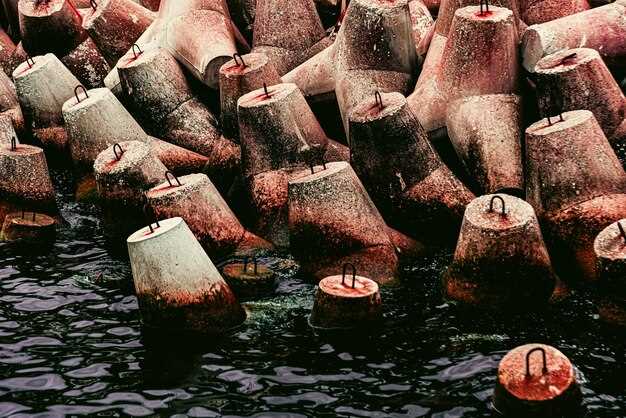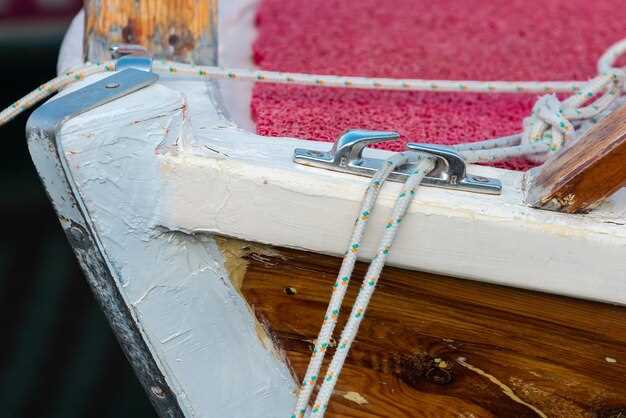Removing barnacles and restoring hull condition

Maintaining a boat’s hull is crucial for ensuring optimal performance and longevity. One of the most common issues faced by boat owners is the accumulation of barnacles. These pesky marine organisms can latch onto the hull, creating drag that negatively impacts speed and fuel efficiency. Effective cleaning of barnacles is not only necessary for cosmetic reasons but also vital for the health of your boat.
Cleaning barnacles from a boat hull involves several methods, ranging from manual scraping to chemical treatments. Each approach has its pros and cons, and the best choice depends on the level of infestation and the material of the hull. Understanding the biology of barnacles can also aid in developing preventative measures to mitigate their growth in the future.
Restoring a boat hull after barnacle removal is equally important. Ensuring that the surface is free from any remnants and damage will help in maintaining smooth sailing. This includes applying appropriate coatings to prevent future barnacle infestations and enhancing the overall durability of the hull.
Best Techniques for Barnacle Removal Without Damaging the Hull
Removing barnacles from a boat’s hull is essential for maintaining its performance and durability. However, it is crucial to employ techniques that ensure the hull remains intact and undamaged. Here are some of the best methods for effective barnacle removal.
One of the safest approaches is using a plastic or rubber scraper. These tools are gentle on the hull’s surface while effectively dislodging barnacles. Start at the edge of the barnacle and slowly work your way underneath it, applying even pressure to avoid scratching the hull.
Another technique involves soaking the barnacles with warm, soapy water beforehand. This helps to soften the barnacles, making them easier to remove without using excessive force. Allow the soapy solution to penetrate for several minutes before scraping them off.
For those stubborn barnacles, a combination of vinegar and baking soda can work wonders. Apply this mixture to the affected area and let it sit for a while. The acidity of the vinegar will help break down the barnacle’s adhesive properties, enabling easier removal.
If you prefer not to use manual tools, consider using a high-pressure water cleaner with the appropriate nozzle. Ensure the pressure is not set too high to avoid damaging the hull. A steady, controlled spray can efficiently wash away barnacles without causing harm.
Finally, after removal, always wash the hull with fresh water to eliminate any debris and residue, ensuring the surface is clean before applying any anti-fouling paint or sealant.
Step-by-Step Guide to Properly Clean and Maintain Your Boat

Proper maintenance is essential for extending the life of your boat’s hull and ensuring optimal performance. Follow this step-by-step guide to effectively remove barnacles and keep your boat in top condition.
- Gather Your Supplies:
- Scraper or putty knife
- Soft-bristle brush
- Boat soap and water
- Protective gloves
- Sandpaper (if necessary)
- Marine antifouling paint
- Preparation:
Before starting the cleaning process, ensure you have all necessary supplies at hand. Choose a well-ventilated area, preferably a dry dock or boat ramp, for easier access to the hull.
- Initial Inspection:
Inspect the boat hull for barnacle growth and other debris. Identifying areas with heavy barnacle accumulation will help you focus your cleaning efforts.
- Removal of Barnacles:
Using a scraper or putty knife, gently remove barnacles from the hull. Be careful not to damage the surface. Wipe away any loosened barnacles with a soft-bristle brush.
- Cleaning the Hull:
Mix boat soap with water in a bucket. Use a sponge or soft-bristle brush to clean the entire hull, removing any remaining dirt, grime, and algae. Rinse thoroughly with clean water.
- Sanding (if necessary):
If any barnacle remnants or rough spots remain, lightly sand the affected areas to ensure a smooth surface. Wipe off the dust with a damp cloth after sanding.
- Apply Antifouling Paint:
Once the hull is clean and dry, apply a coat of marine antifouling paint to prevent future barnacle growth. Follow the manufacturer’s instructions for application and drying time.
- Final Inspection:
Double-check the hull for any missed barnacles or debris. Ensure the antifouling paint covers all necessary areas for best protection.
- Regular Maintenance:
To maintain the cleanliness of your boat, regularly inspect the hull for barnacle growth and clean as necessary. Consider scheduling routine cleaning every few months, especially if your boat is in the water for extended periods.
By following this step-by-step guide, you can effectively remove barnacles and maintain your boat’s hull, ensuring a smooth sailing experience every time you hit the water.
Choosing the Right Products for Hull Restoration After Barnacle Removal

After the removal of barnacles, it’s crucial to select appropriate products for effective hull restoration. The surface of the hull can often be compromised during the cleaning process, and using the right materials ensures longevity and performance.
Firstly, assess the condition of the hull post-cleaning. If scratches or damage are present, a high-quality epoxy filler can be used to repair these areas. Look for products specifically designed for marine applications, as they offer better adhesion and resistance to water.
Next, consider applying a primer designed for underwater use. A marine-grade primer will not only enhance the adhesion of the next layer but also protect the hull from corrosion and further biofouling. Ensure that the primer is compatible with the topcoat you plan to use.
For the final coating, select a robust marine paint that provides UV protection and is formulated to withstand harsh marine environments. Consider anti-fouling paints, which are designed to prevent the growth of new barnacles and other marine organisms. These paints come in various formulations, catering to different water conditions and boat usage.
Lastly, always follow the manufacturer’s instructions for application and safety. Proper surface preparation and product application are key to achieving a durable and effective hull restoration after barnacle removal.




